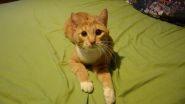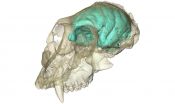(Press-News.org) An ambitious policy package is essential for the UK to transform its energy system to achieve the deep reductions in carbon emissions required to avoid dangerous climate change, according to research led by UCL scientists. To meet climate targets set for 2050, policies need to ensure strong action is taken now, while preparing for fundamental changes in how energy is provided and used in the long term.
The study is part of the Deep Decarbonization Pathway Project (DDPP) which is coordinated by the Institute for Sustainable Development and International Relations (IDDRI) and the Sustainable Development Solutions Network (SDSN) set by the United Nations Secretary General. It analysed possible pathways the UK could take to decarbonise its energy system with the aim of limiting global warming to the internationally agreed 2 degrees Celsius target by 2050.
The findings will feed into the final DDPP report which includes research from 16 countries that account for 75% of global greenhouse gas emissions and is scheduled for publication in September 2015.
Published today by IDDRI and SDSN, the study shows how the UK can meet its targets through multiple pathways, with key findings being:
The power sector must decarbonise by 85-90% by 2030 - this step is essential for increasing low carbon electricity provision in the transport and buildings sector, which is estimated to at least double between now and 2050.
Carbon capture and storage (CCS), when cost-effective and available at scale, needs to play a central role in both power generation and industrial sectors.
The direct use of fossil fuels in end use sectors must decrease by more than 70% by 2050.
The scientists behind the study say a stronger and more ambitious policy package than currently exists is required to transform the UK energy system, emphasising that consistency is needed across all energy-related policies and adequate policy timeframes are set to provide certainty for investors. They recommend decisions on airport infrastructure and new fossil resource extraction must consider long term carbon targets, calling into question large-scale expansion, and that cost-effective low carbon technologies such as onshore wind continue to be strongly promoted.
Report lead author, Mr Steve Pye, UCL Energy Institute, said: "With¬out a sustained and strong policy push that increases year on year in ambition, the delivery of low carbon technologies at the necessary scale will not be achieved. Carbon emissions need to halve by 2030 to 4 tCO2/capita, and reduce to less than 1 tCO2/capita by 2050. For this, the UK needs policies now that realise the full low cost energy efficiency potential in buildings, ensure the rapid deployment of low carbon generation technologies such as CCS, and prepare for the roll-out of low emissions vehicles in the transport sector and alternative, non-gas based heating systems for homes."
The modelling used to explore different pathways shows that a move to low carbon energy sources requires a strong reduction in the supply of conventional fossil fuels, particularly in oil used for transport and gas used for heating buildings. In the long term, the continued use of gas in electricity and other industries will be strongly dependent on the availability of CCS.
Co-author Professor Neil Strachan, UCL Energy Institute, said: "We've set out feasible pathways that can be taken now, over the next 15 years and in the long term up until 2050 which will help the UK make significant reductions in emissions needed to avoid dangerous climate change. The UK is in a position to play a strong role in international engagement on reducing carbon emissions by cooperating on developing low-carbon technologies and setting an example to other countries by implementing ambitious policies that direct towards a low carbon future."
Mr Pye, added: "Despite the 2050 target already being challenging, the UK may need to be even more ambitious with actions taken prior to 2050, as evidence shows that a net zero emissions global energy system is likely to be required by the 2070s to limit global warming. Both near and long-term investments need to take into account the transition required after 2050."
Teresa Ribera, Director of IDDRI, said: "The UCL team did a fantastic job. Their study on decarbonization pathways for the UK is the first on a long series of DDPP country reports. These reports which were done by recognized experts in each country with a common and transparent methodology show that each country has its own pathways but that decarbonization is feasible in each context and that it is compatible with development and economic growth. Five months before the Paris Climate conference, this is really inspiring."
INFORMATION:
It may sound counter-intuitive, but crushing up bees into a 'DNA soup' could help conservationists understand and even reverse their decline - according to University of East Anglia scientists.
Research published today in the journal Methods in Ecology and Evolution shows that collecting wild bees, extracting their DNA, and directly reading the DNA of the resultant 'soup' could finally make large-scale bee monitoring programmes feasible.
This would allow conservationists to detect where and when bee species are being lost, and importantly, whether conservation interventions ...
BARCELONA-LUGANO, 4 July 2015 - Patients with metastatic colorectal cancer (mCRC) that are mutation-free in the KRAS, NRAS, BRAF and PIK3CA genes showed significant benefit from continuing anti-epidermal growth factor receptor (EGFR) therapy beyond progression following first-line chemotherapy and an anti-EGFR monoclonal antibody, according to study results (1) presented today at the ESMO 17th World Congress on Gastrointestinal Cancer in Barcelona, Spain.
Prof Fortunato Ciardiello from Seconda Università degli Studi di Napoli, Italy, presented results from the CAPRI-Goim ...
Mice that are exposed to the powerful smell of cat urine early in life do not escape from cats later in life. Researchers at the A. N. Severtsov Institute of Ecology and Evolution, Russia, have discovered that mice that smell cat urine early in life, do not avoid the same odour, and therefore do not escape from their feline predators, later in life.
"Because the young mice (less than 2 weeks-old) are being fed milk while being exposed to the odour, they experience positive reinforcement," says Dr Vera Voznessenskaya, one of the lead researchers behind this study. "So ...
To mark the final day of the 65th Lindau Nobel Laureate Meeting, on Friday, 3 July, over 30 Nobel laureates assembled on Mainau Island on Lake Constance signed a declaration on climate change. The "Mainau Declaration 2015 on Climate Change" states "that the nations of the world must take the opportunity at the United Nations Climate Change Conference in Paris in December 2015 to take decisive action to limit future global emissions." It is expected that a new international agreement on climate protection will be approved at the 21st UN Climate Conference to succeed the ...
DURHAM, N.C. -- The brain hidden inside the oldest known Old World monkey skull has been visualized for the first time. The creature's tiny but remarkably wrinkled brain supports the idea that brain complexity can evolve before brain size in the primate family tree.
The ancient monkey, known scientifically as Victoriapithecus, first made headlines in 1997 when its fossilized skull was discovered on an island in Kenya's Lake Victoria, where it lived 15 million years ago.
Now, thanks to high-resolution X-ray imaging, researchers have peered inside its cranial cavity ...
BARCELONA-LUGANO, 3 July 2015 - The phase IIIb CONSIGN study has confirmed the benefit of regorafenib in patients with previously treated metastatic colorectal cancer (mCRC), researchers announced at the ESMO 17th World Congress on Gastrointestinal Cancer 2015 in Barcelona.(1) The safety profile and progression free survival were similar to phase III trial results.
CONSIGN was a prospective, observational study that was initiated to allow patients with mCRC access to regorafenib before marketing authorisation and to assess safety, which was the primary endpoint. The randomised ...
Spiders travel across water like ships, using their legs as sails and their silk as an anchor, according to research published in the open access journal BMC Evolutionary Biology. The study helps explain how spiders are able to migrate across vast distances and why they are quick to colonise new areas.
Common spiders are frequently observed to fly using a technique called 'ballooning'. This involves using their silk to catch the wind which then lifts them up into the air. Ballooning spiders are estimated to move up to 30 km per day when wind conditions are suitable, helping ...
Scientists have developed a new technique allowing the bioprinting at ambient temperatures of a strong paste similar to 'play dough' capable of incorporating protein-releasing microspheres.
The scientists demonstrated that the bioprinted material, in the form of a micro-particle paste capable of being injected via a syringe, could sustain stresses and strains similar to cancellous bone - the 'spongy' bone tissue typically found at the end of long bones.
This work, published today (3 July 2015) in the journal Biofabrication, suggests that bioprinting at ambient temperatures ...
A therapy that replaces the faulty gene responsible for cystic fibrosis in patients' lungs has produced encouraging results in a major UK trial.
One hundred and thirty six patients aged 12 and over received monthly doses of either the therapy or the placebo for one year.
The clinical trial reached its primary endpoint with patients who received therapy having a significant, if modest benefit in lung function compared with those receiving a placebo.
Patients from across England and Scotland participated, and were treated in two centres, Royal Brompton Hospital in ...
Banded mongooses take extraordinary risks to ensure that they find the right mate.
Female banded mongooses risk their lives to mate with rivals during pack 'warfare' and both males and females have also learned to discriminate between relatives and non-relatives to avoid inbreeding even when mating within their own social group.
Researchers from the University of Exeter and Liverpool John Moores University found that 18% of wild banded mongoose pups are fathered by males from rival packs.
Banded mongooses are found living in stable social groups across Central ...




